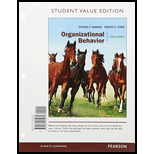
To determine:
The three components of attitudes
Introduction:
An Attitude is a learnt tendency to evaluate things in a certain way. These things includes but not limited to people, places, products etc. Attitudes are formed based on three components, namely Affective component, Behavioral component and Cognitive component. This is also known as the ABC of attitude. These three components in combination will create an individual’s attitude towards a certain person or an object.
Explanation of Solution
Affective component refers to the emotional aspect of the attitude. It is about those emotions that are attached with the object. Emotions are mental activities based on conscious experiences and include things such as fear, happiness, anger etc. The affective component will shape our attitude towards a certain thing. E.g.-: “I am afraid of spiders”, fear is an affective component and this emotion will force the individual to have a displeasing attitude towards spiders.
Behavioral component refers to those actions and behaviors, one would demonstrate as a result of the attitude formed. These can be physical behaviors such as running, shouting or screaming when spiders are seen or non physical behaviors such as avoiding spiders.
The cognitive component refers to the mental process of acquiring knowledge and information about a certain object that will shape our attitude. This may be influenced by our learning, beliefs, and experiences. For e.g.-: I have seen how painful spider bites can be on TV therefore; i know that they are dangerous.
Individuals form attitudes for everything around them; it helps us to create our perception about the surrounding. An attitude is formed based on an individual’s knowledge about the object (cognitive), combined with their emotional reactions (affective) and their actions toward that object (behavioral).
Want to see more full solutions like this?
Chapter 3 Solutions
Organizational Behavior, Student Value Edition Plus MyLab Management with Pearson eText -- Access Card Package (17th Edition)
- This question is regarding business negotiation BUS356 in SUSS. The case below is extracted from Harvard Business Review Case Study “Move Fast,but without Bias: Ethical AI Development in a Start-up Culture”. It is important to support your answers with specific examples based on thescenario given in the case study below to demonstrate your understanding andapplication of the relevant concepts. You may make reasonable assumptions, aspart of your analysis. Answers must be supported with theoretical models and concepts from therecommended textbook, Lewicki, R. J., Saunders, D. M. & Barry, B. (2021). Essentialsof Negotiation (7th ed). New York: McGraw-Hill International Edition and coursematerials. Please provide useful links and citations for learning purposes.arrow_forwardThis question is regarding business negotiation BUS356 in SUSS. The case below is extracted from Harvard Business Review Case Study “Move Fast,but without Bias: Ethical AI Development in a Start-up Culture”. It is important to support your answers with specific examples based on thescenario given in the case study below to demonstrate your understanding andapplication of the relevant concepts. You may make reasonable assumptions, aspart of your analysis. Answers must be supported with theoretical models and concepts from therecommended textbook, Lewicki, R. J., Saunders, D. M. & Barry, B. (2021). Essentialsof Negotiation (7th ed). New York: McGraw-Hill International Edition and coursematerials. Please provide useful links and citations for learning purposes. One of the attached documents is the question while another one is some tips of negotiationarrow_forwardIdentify potential ethical challenges in producing and marketing your company's skincareproducts from jamaica in europe and associated countries like germany italy and france and how your team will address them.arrow_forward
- Make a total of 19-20 slides below the topic and give some briefs, which I should say as a speech for presentation time with that slide. (a) title slide(b) the content of the presentation and the presenter (4presenter-for each 4-5 slide) for each section(c) Topic: Factor what is more important to Gen X,Y,Z in their receptivity to international assignments. Critically discuss how factors such as culture, personality, and skills/experience may impact generational differences. The presentation should discuss how managers can use human resource planning to attract a multigenerational workforce interested in international career assignments.it considers the internal and external labour supplyarrow_forwardThis question is regarding business negotiation BUS356 in SUSS. The case below is extracted from Harvard Business Review Case Study “Move Fast,but without Bias: Ethical AI Development in a Start-up Culture”. It is important to support your answers with specific examples based on thescenario given in the case study below to demonstrate your understanding andapplication of the relevant concepts. You may make reasonable assumptions, aspart of your analysis. Answers must be supported with theoretical models and concepts from therecommended textbook, Lewicki, R. J., Saunders, D. M. & Barry, B. (2021). Essentialsof Negotiation (7th ed). New York: McGraw-Hill International Edition and coursematerials. Please provide useful links and citations for learning purposes.arrow_forwardThis week we focused on how to manage corporate social responsibility (CSR) and sustainability efforts. Initial Post Instructions Identify one CSR activity that would align well with the organization and country you selected for your final project. Explain why you believe this CSR activity is a good fit for both the organization and the selected expansion country. Describe one outcome that you would like to achieve from this CSR activity. In your responses to two classmates’ discussion posts, provide a different CSR activity that you recommend for your classmates’ projects. Alternatively, you may provide feedback to your classmates’ selected CSR activity pointing out a possible risk to this action and why you think this CSR activity is risky.arrow_forward
- Develop a worthwhile, substantial, and innovative strategic initiative. Your strategic initiative could be for an organization for which you work, or have worked, or for an organization for which you would like to work. For MGT451’s purposes, an organization can be a formal organization such as a for-profit business or a not-for-profit agency. For example, if your ideal job is to be a marketing manager for a consumer products company, develop an initiative to launch a new hair care product into the US market. For this assignment profile the organization, your ideal role in the organization, the nature of the strategic initiative, goals to be achieved, and likely measures of success.arrow_forwardCSR and Corporate Ethics - A Global Approach This week you will start working on your Portfolio Project sections. This Critical Thinking assignment can contribute to the completion of the final portfolio project due in Module Eight. As you complete the module assignments, integrate any feedback from your instructor and the knowledge you gain from taking the course to update your assignments in preparation for completing your international expansion plan due in Module Eight. Now that you have identified the organization, country, and product, the Management Team has asked you to prepare a memo for them for the next meeting to include the research you have gathered on the following topics. Please address your memo to the Managing Director and use an appropriate heading for each of the topics listed. Country Background: Provide a brief overview of the country you have chosen and why you think it will be a good location for the organization to manufacture the proposed product. Corporate…arrow_forwardStrategy Formation Experiences Please share an experience in which you played the strategist. What was intended to be achieved? Did the guiding strategy form deliberately, did the guiding strategy emerge or did both elements–deliberate and emergent strategy come into play? Reflecting on your experience, how could the strategy formation process you used be improved?arrow_forward
- Discuss the importance of Ethical leadership from the perspective of King IV and Virtue Ethicsarrow_forwardGeneral accountingarrow_forwardThe St. Louis Cardinals would like to improve their post season performance this year. They have hired you as a consultant to study the team during winter practice and help their analytics team to fine tune their on-field performance. Armed with your recent knowledge of sampling and estimation, you set to collect data and provide feedback to the team. How can you help the team from what you have learned in this chapter? Describe your sampling plan? What data would you like to collect, the parameter(s) of interest. How you would use the confidence interval to inform the team?arrow_forward
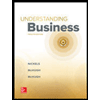 Understanding BusinessManagementISBN:9781259929434Author:William NickelsPublisher:McGraw-Hill Education
Understanding BusinessManagementISBN:9781259929434Author:William NickelsPublisher:McGraw-Hill Education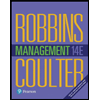 Management (14th Edition)ManagementISBN:9780134527604Author:Stephen P. Robbins, Mary A. CoulterPublisher:PEARSON
Management (14th Edition)ManagementISBN:9780134527604Author:Stephen P. Robbins, Mary A. CoulterPublisher:PEARSON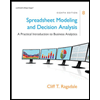 Spreadsheet Modeling & Decision Analysis: A Pract...ManagementISBN:9781305947412Author:Cliff RagsdalePublisher:Cengage Learning
Spreadsheet Modeling & Decision Analysis: A Pract...ManagementISBN:9781305947412Author:Cliff RagsdalePublisher:Cengage Learning Management Information Systems: Managing The Digi...ManagementISBN:9780135191798Author:Kenneth C. Laudon, Jane P. LaudonPublisher:PEARSON
Management Information Systems: Managing The Digi...ManagementISBN:9780135191798Author:Kenneth C. Laudon, Jane P. LaudonPublisher:PEARSON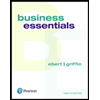 Business Essentials (12th Edition) (What's New in...ManagementISBN:9780134728391Author:Ronald J. Ebert, Ricky W. GriffinPublisher:PEARSON
Business Essentials (12th Edition) (What's New in...ManagementISBN:9780134728391Author:Ronald J. Ebert, Ricky W. GriffinPublisher:PEARSON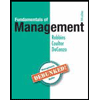 Fundamentals of Management (10th Edition)ManagementISBN:9780134237473Author:Stephen P. Robbins, Mary A. Coulter, David A. De CenzoPublisher:PEARSON
Fundamentals of Management (10th Edition)ManagementISBN:9780134237473Author:Stephen P. Robbins, Mary A. Coulter, David A. De CenzoPublisher:PEARSON





